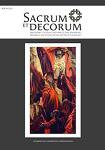Struktura argumentacji wczesnych interpretacji kaplicy w Ronchamp (Część I)
Argumentation structure in early interpretations of the Chapel at Ronchamp (Part I)
Author(s): Cezary WąsSubject(s): Cultural history
Published by: Wydawnictwo Uniwersytetu Rzeszowskiego
Keywords: modern architecture; sacred architecture; Le Corbusier; Ronchamp
Summary/Abstract: In the study of art, it is customary to rationalize at least some aspects of this special object of reflection, which in its essential features eludes the forms of academic discourse. This is particularly true of the most outstanding works of art, which always invite multiple readings. A perfect case in point is the wide spectrum of interpretations engendered by the Ronchamp Chapel; the structure has been variously defined as a manifestation of avant-garde modernism, a specific form of functionalism, or an expression of the architect’s hidden esoteric inclinations. Ever since it was finished, attempts to elucidate it have proven difficult. Early judgments include a number of statements notable for their rich argumentation and strength of reasoning. Arguments they employ, however, often go in different, and sometimes opposite, directions. The present analysis of two out of five selected interpretations of the Ronchamp Chapel (the other three will be covered in the next issue of “Sacrum et Decorum”) seeks to demonstrate that the interpreters’ intention was to make the building widely understood and accepted. Even though the two interpretations exhibit certain similarities, they are also distinctly different. Using the typology suggested by Hayden White, one, highly individualistic interpretation could be described as politically “anarchist”, while the other, whose author treats profound changes in religion and art as nearly self-evident, could be labelled “liberal”.
Journal: Sacrum et Decorum. Materiały i studia z historii sztuki sakralnej
- Issue Year: 2011
- Issue No: 4
- Page Range: 44-64
- Page Count: 21
- Language: Polish

